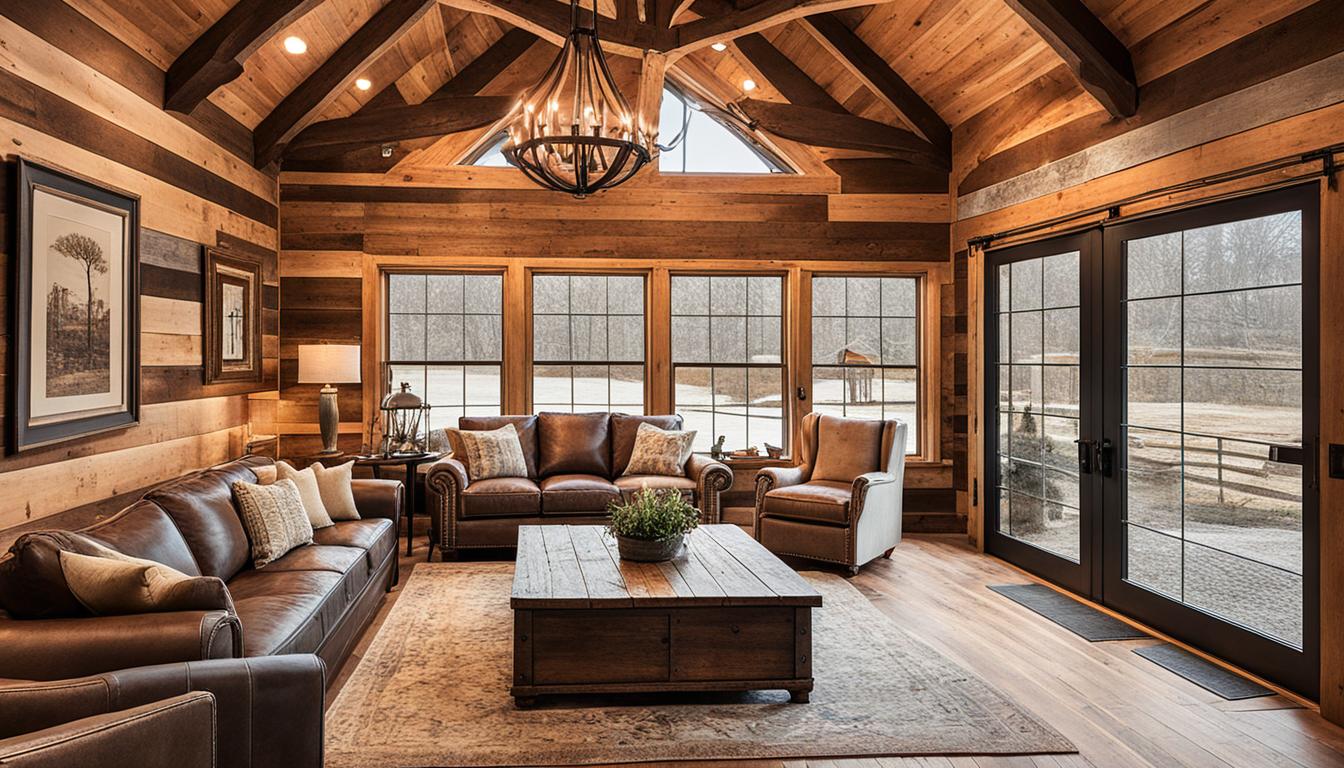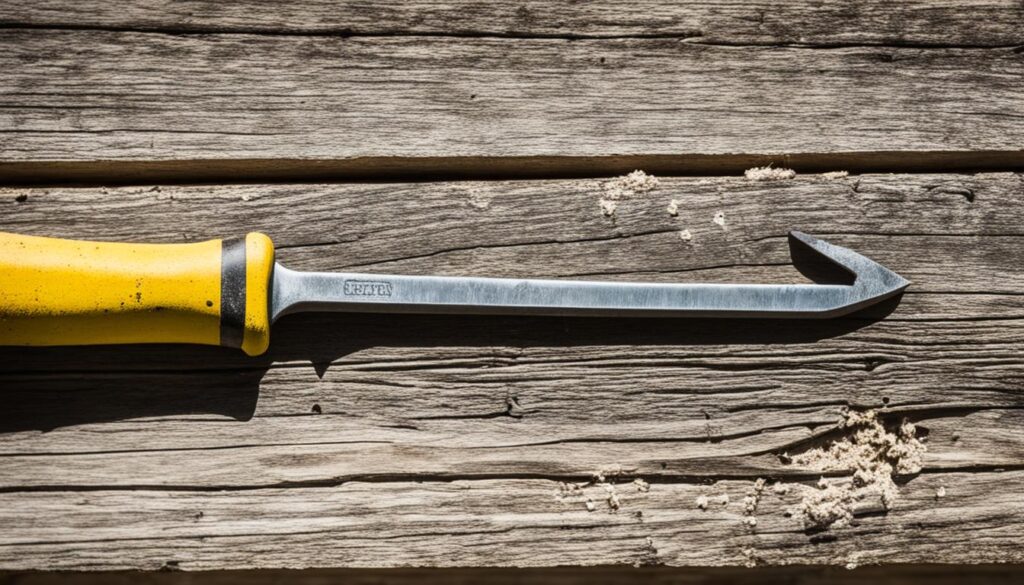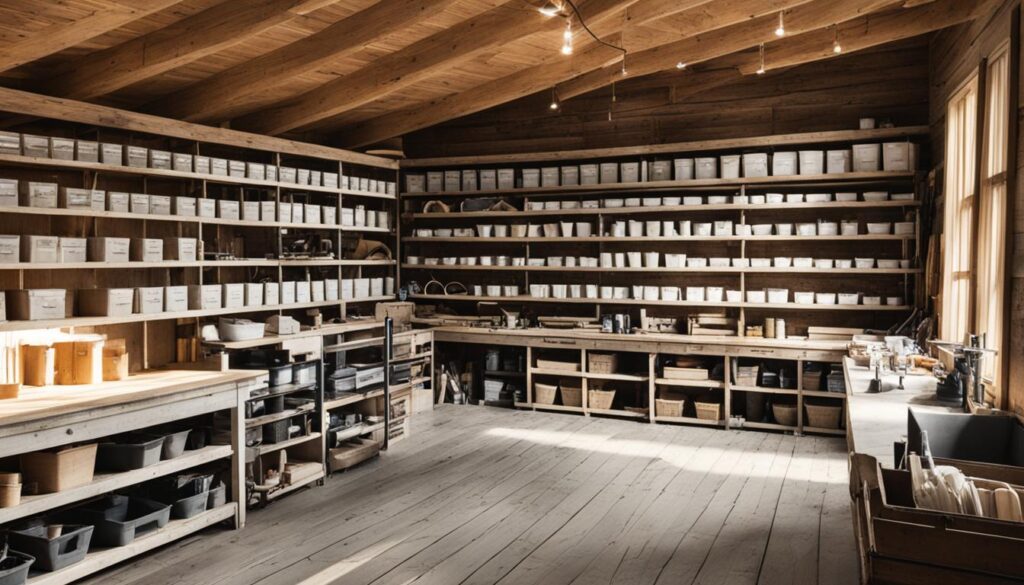
Pest-Free Old Wood Planks in Converted Barn Homes
Welcome to our article series on maintaining and renovating converted barn homes. In this first section, we will focus on the essential techniques for maintaining the charm of your barn while effectively disposing of old wood planks. Whether you’re embarking on a barn conversion project or already living in one, this guide will provide valuable insights into converted barn maintenance, barn renovation techniques, and old wood plank disposal.
Key Takeaways:
- Learn effective techniques to maintain the charm of your converted barn
- Discover tips for removing old wood planks and repurposing them if desired
- Understand the importance of maintaining a pest-free environment in your barn
- Explore preventive measures and regular maintenance tasks for pest prevention
- By following the tips and techniques provided, you can ensure a pest-free and well-maintained converted barn home
Tips for Removing Old Wood Planks in a Converted Barn
In a converted barn, removing old wood planks is a crucial step in maintaining its integrity and creating a fresh space. Whether you’re renovating or repurposing your barn, it’s essential to know the best methods, tools, and precautions to ensure a smooth and efficient wood removal process.
Here are some practical tips to help you remove old wood planks from your converted barn:
- Assess the condition: Before starting the removal process, carefully inspect the wood planks to determine if any are salvageable. Remove any nails or screws and set aside planks that can be repurposed for other projects.
- Choose the right tools: Depending on the size and condition of the planks, you may need different tools for their removal. Common tools include pry bars, hammers, crowbars, reciprocating saws, and circular saws. Ensure you have the necessary safety equipment such as gloves, goggles, and a dust mask.
- Detach the planks: To remove the planks, start by loosening any nails or screws that may be holding them in place. Use a pry bar or hammer to carefully pry the planks away from the wall or floor, working slowly and methodically to avoid damaging surrounding areas.
- Remove stubborn nails: In some cases, nails may be difficult to remove. Use a reciprocating saw or circular saw to cut through the plank near the nail, allowing you to remove it without causing too much damage.
- Dispose or repurpose: Once you have removed the old wood planks, decide whether you want to dispose of them or repurpose them for other projects. If the planks are still in good condition, you can consider using them for furniture, decor, or even as building materials for other projects.
By following these tips, you can effectively remove old wood planks from your converted barn and make way for new possibilities. However, always prioritize safety and take proper precautions to avoid accidents and injuries during the removal process.

Maintaining a Pest-Free Environment in Your Converted Barn
When converting a barn into a cozy living space, it’s crucial to ensure a pest-free environment. Common pests such as termites, ants, rodents, and wood-boring insects can be attracted to the old wood used in barn conversions. However, with proper pest prevention measures and regular maintenance, you can keep your barn conversion free from unwanted guests.
Common Pests Attracted to Old Wood
Old wood planks used in barn conversions can be a magnet for pests. Here are some of the common culprits:
- Termites: These wood-destroying insects can silently cause significant damage to the structural integrity of your barn conversion.
- Ants: Certain species of ants, like carpenter ants, are attracted to moist wood and can cause structural damage.
- Rodents: Mice and rats can find their way into your barn conversion and cause damage to both the wood and your belongings.
- Wood-boring insects: Beetles and carpenter bees are known for tunneling through wood, leaving behind unsightly holes and compromising its strength.
Preventive Measures for a Pest-Free Barn
Implementing effective preventive measures is key to maintaining a pest-free barn conversion. Here are some tips to keep pests at bay:
- Inspect and seal any cracks or gaps in the walls, floors, and ceilings. This will prevent pests from entering your barn conversion.
- Keep the interior and exterior of your barn conversion clean and tidy. Remove any sources of food or standing water that may attract pests.
- Regularly check for signs of pest activity, such as droppings, gnaw marks, or damaged wood. Address any issues immediately to prevent infestations from spreading.
- Consider using pest-resistant materials or treating the wood with appropriate finishes or coatings to make it less appealing to pests.
- Install screens on windows and doors to prevent insects and rodents from entering your barn conversion.
By implementing these preventive measures, you can significantly reduce the risk of pests infesting your converted barn and protect the structural integrity of the old wood planks.
Maintenance Tasks for Barn Conversion Preservation
Maintaining your barn conversion goes hand in hand with pest prevention. Regular maintenance tasks can help preserve the integrity of the structure and ensure a long-lasting living space. Here are some essential maintenance tasks to consider:
- Regularly inspect the wood planks for signs of damage or decay. Replace any damaged planks promptly to prevent pest infestations.
- Monitor the humidity levels in your barn conversion and use dehumidifiers or ventilation systems to keep moisture under control. Damp wood is more susceptible to pests.
- Apply wood preservatives to protect the old wood from pests, fungi, and rot.
- Trim any tree branches or vegetation near your barn conversion that could provide easy access for pests.
By incorporating these maintenance tasks into your routine, you can both prevent pest issues and ensure the longevity of your barn conversion.

Creating and maintaining a pest-free environment in your converted barn requires diligence and proactive measures. By following these pest prevention strategies and regular maintenance tasks, you can enjoy a charming, pest-free living space that stands the test of time.
Conclusion
In conclusion, maintaining a converted barn home made of old wood planks requires careful attention to proper maintenance and pest prevention. By following the tips and techniques outlined in this article, homeowners can ensure their barn conversion remains both charming and pest-free.
Throughout the article, we explored essential techniques for maintaining converted barn homes, focusing on effectively rid your home of old wood planks while preserving its charm. We discussed practical advice on removing old wood planks, including various methods, tools, and safety precautions for a smooth and efficient wood removal process. Additionally, we provided tips on how to salvage and repurpose the removed planks, if desired.
Furthermore, we emphasized the importance of maintaining a pest-free environment in a converted barn. We identified common pests that may be attracted to old wood and discussed preventive measures to keep them at bay. We also highlighted the significance of regular maintenance tasks that contribute to the preservation of the barn conversion.
By implementing these strategies, homeowners can not only ensure the longevity and structural integrity of their converted barn homes but also create a safe and inviting living space. So, whether you are embarking on a barn renovation project or already own a converted barn, incorporating these valuable tips and techniques will help you maintain a pest-free and enchanting home.




